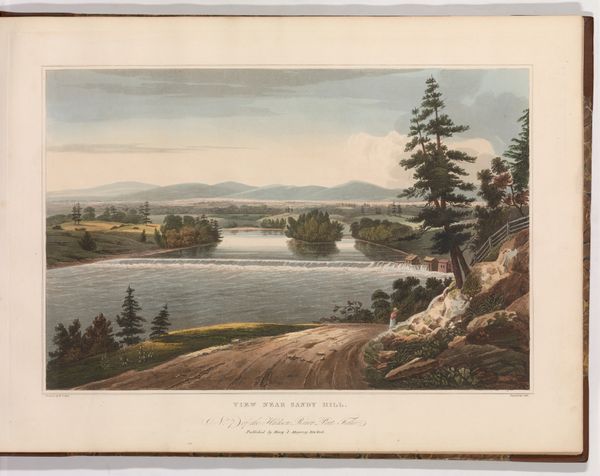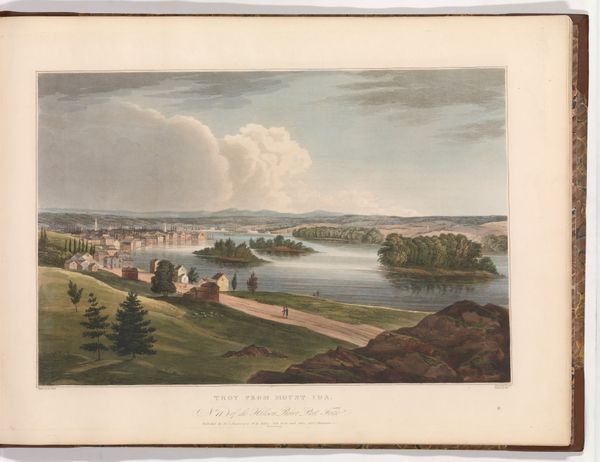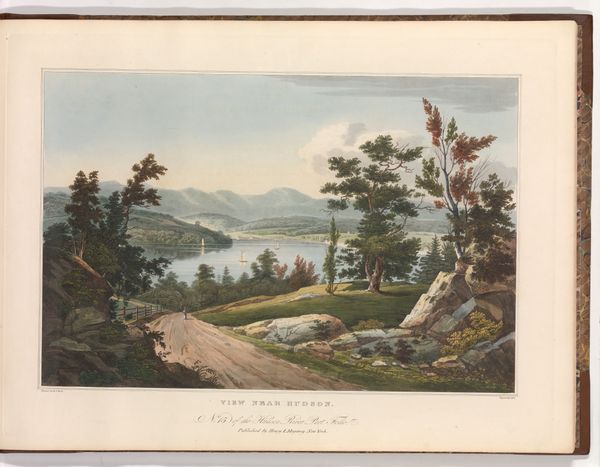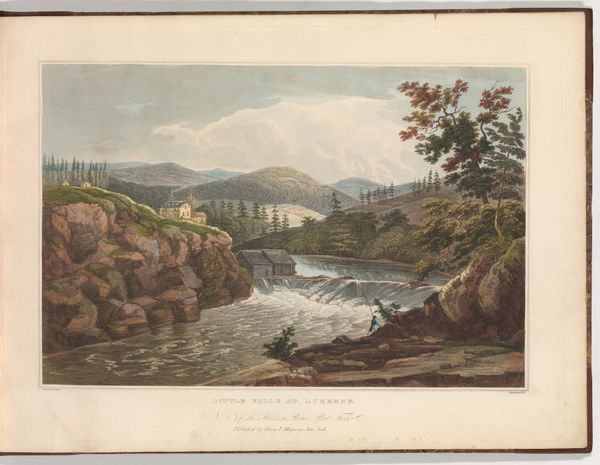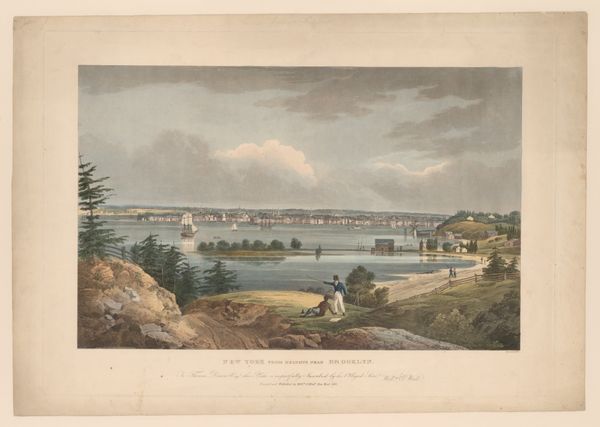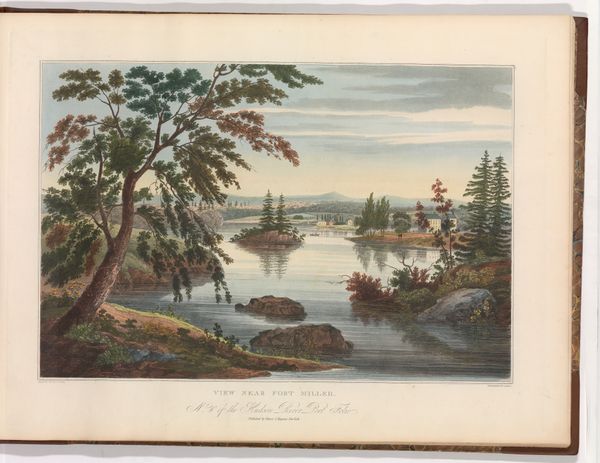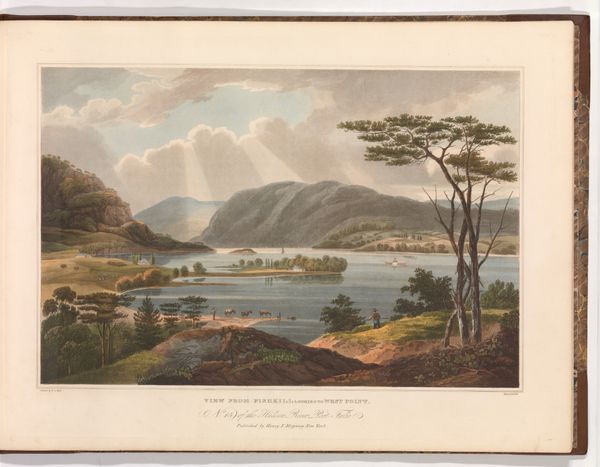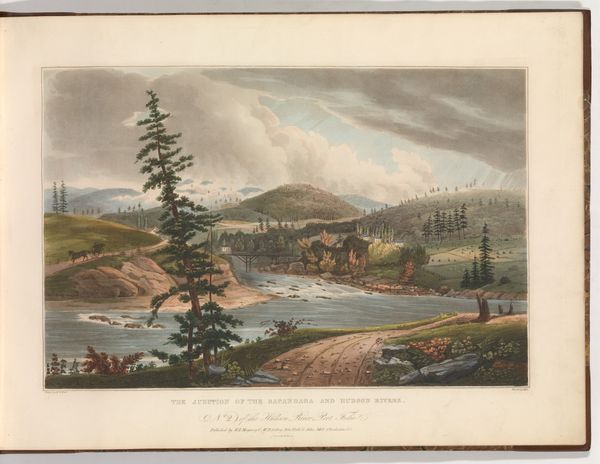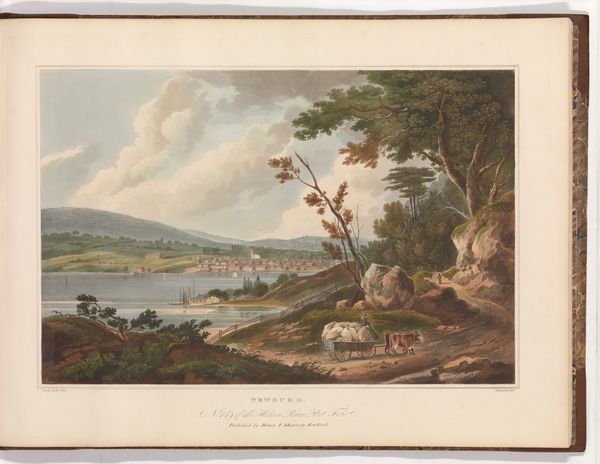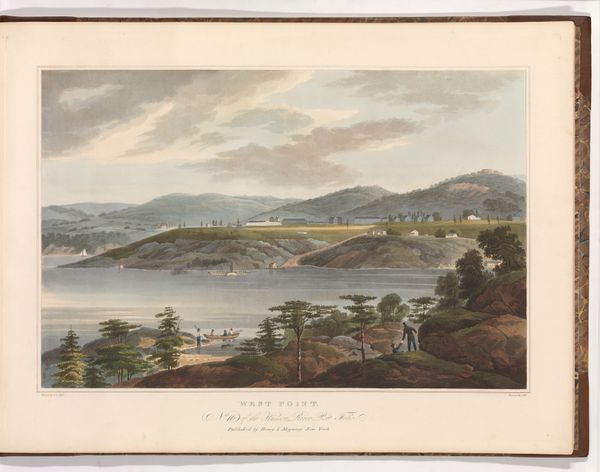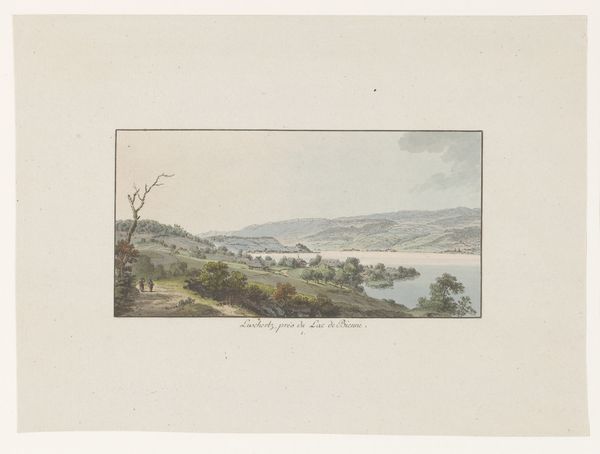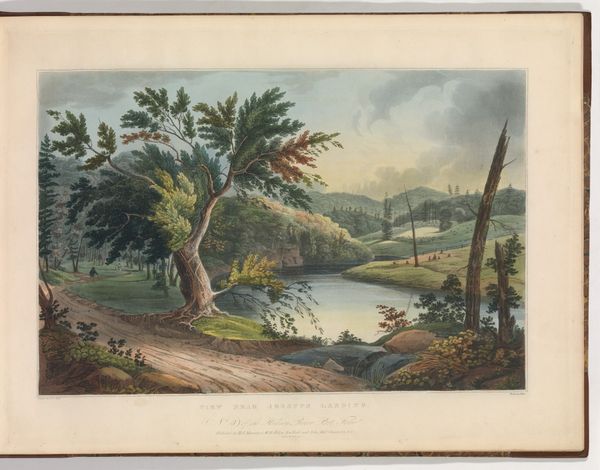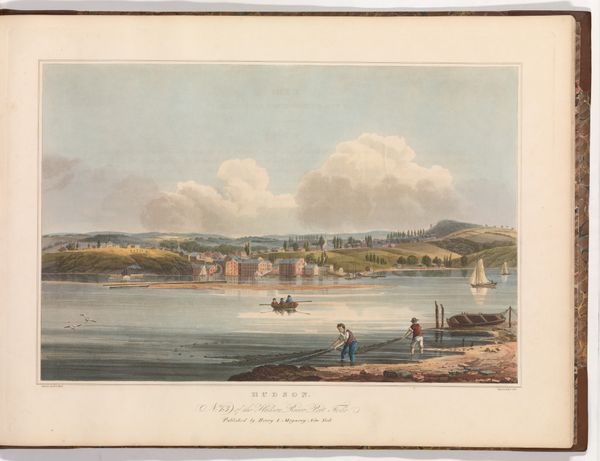
Fort Edward (No. 10 of The Hudson River Portfolio) 1822 - 1823
0:00
0:00
Dimensions: Image: 14 1/16 x 20 3/16 in. (35.7 x 51.3 cm) Sheet: 19 x 24 1/2 in. (48.3 x 62.2 cm)
Copyright: Public Domain
John Hill made this print, Fort Edward, sometime in the early 19th century. It’s one of a series depicting the Hudson River. He wasn't making a painting or a drawing; he was making a print, which is a fundamentally different way of making an image. Hill used a technique called aquatint, which involves etching a copper plate, then using acid to bite out areas that will hold ink. The textures are created using powdered resin. It's a complicated process demanding real skill. The resulting print has a soft, atmospheric quality, which suited the romantic mood of the time. Prints like this were essentially a form of mass media. They were relatively inexpensive, and could be widely distributed. In this way, the image of the Hudson River became accessible to a broad public, shaping perceptions of the American landscape. So, while this print may seem like a straightforward depiction, it's also a product of its time, reflecting the social and economic forces that were shaping American culture. This is a great example of how even a seemingly simple landscape print can reveal complex relationships between art, industry, and society.
Comments
No comments
Be the first to comment and join the conversation on the ultimate creative platform.
